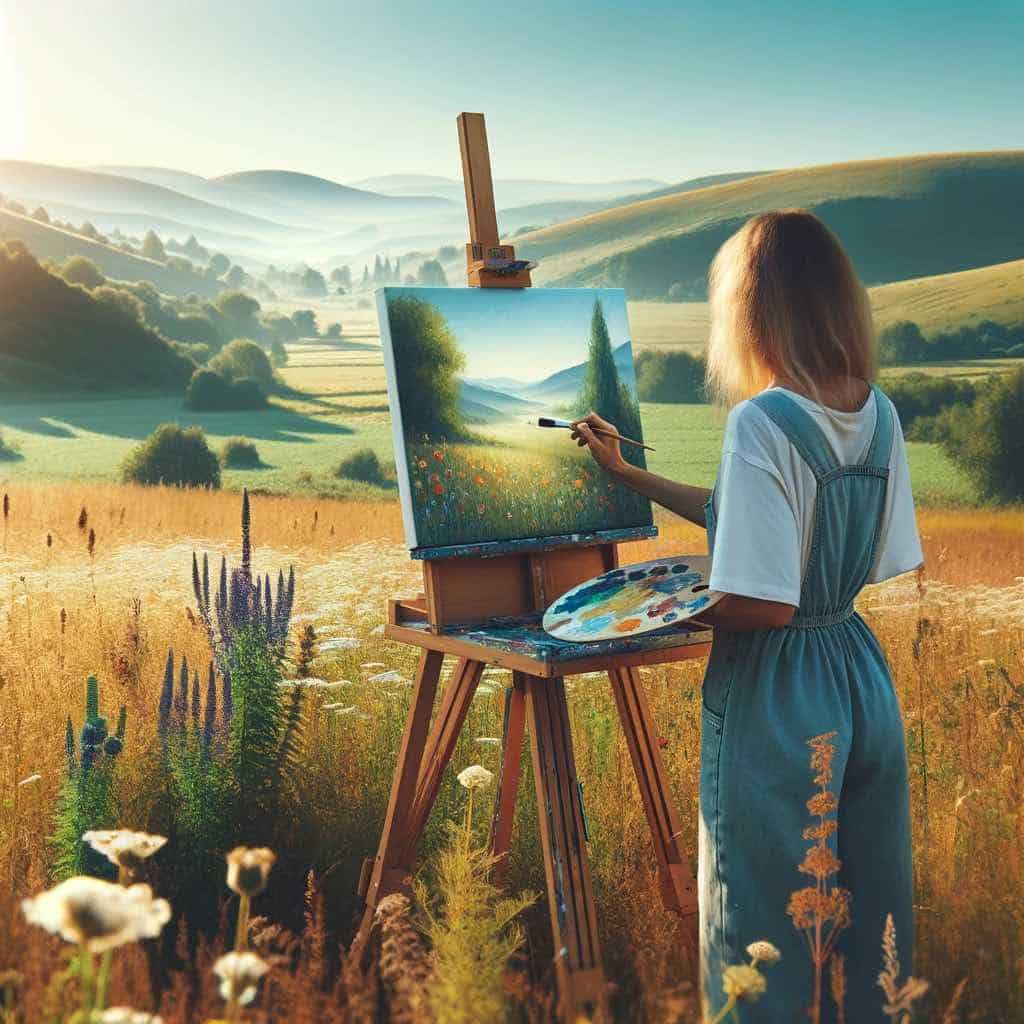A Journey Through Creativity and Connection
Art is an intrinsic part of human history and culture, deeply woven into the fabric of our lives. From ancient cave paintings to modern digital installations, art has always played a vital role in expressing human experience, shaping societies, and connecting people across boundaries. In a friendly exploration, this article delves into the multifaceted value of art in the world, highlighting its cultural, emotional, educational, and economic significance.
Cultural Significance
Art serves as a mirror reflecting a society’s culture, values, and traditions. It provides a unique window into the past, offering insights into previous generations’ lives and beliefs. Through art, we can understand historical events, social movements, and cultural shifts, preserving these narratives for future generations.
Examples:
- Historical Artifacts: Museums and galleries around the world, such as The Louvre in Paris and The British Museum in London, house ancient artifacts and artworks that tell the stories of civilizations long gone. These institutions offer educational resources and exhibitions that make history accessible to all.
- Cultural Festivals: Events like the Venice Biennale and the Rio de Janeiro Carnival showcase diverse artistic traditions, bringing people together to celebrate cultural heritage through visual arts, music, and performance.
For more on how art preserves cultural heritage, visit the UNESCO World Heritage Centre.
Emotional Impact
Art can profoundly evoke emotions, offering solace, joy, inspiration, and a means of coping with life’s challenges. Whether through painting, music, literature, or dance, art connects deeply with our emotions and helps us process complex feelings.
Examples:
- Therapeutic Art: Art therapy is a recognized form of treatment that uses creative expression to help individuals deal with mental health issues. Programs in hospitals and rehabilitation centers worldwide employ art therapy to aid in healing and emotional well-being.
- Personal Expression: Many people turn to art as a personal outlet for self-expression. Drawing, writing poetry, playing an instrument, or engaging in creativity can be deeply fulfilling and therapeutic.
To learn more about the benefits of art therapy, check out the American Art Therapy Association.
Educational Value
Art education plays a crucial role in fostering creativity, critical thinking, and problem-solving skills. It encourages students to explore different perspectives, enhancing their cognitive and social abilities.
Examples:
- School Programs: Integrating arts into the school curriculum, as seen in initiatives like STEAM (Science, Technology, Engineering, Arts, and Mathematics), helps students develop a well-rounded education. Programs like these have been shown to improve academic performance and student engagement.
- Community Workshops: Local art workshops and classes provide lifelong learning opportunities for people of all ages, fostering community engagement and personal growth.
Explore the importance of arts in education through resources from Americans for the Arts.
Social Connection
Art brings people together, fostering community and dialogue. It serves as a universal language that transcends cultural and linguistic barriers, promoting empathy and understanding.
Examples:
- Public Art Projects: Murals, sculptures, and installations in public spaces invite people to engage with art in their everyday environments. Projects like the “Before I Die” walls, where people write their hopes and dreams on public boards, encourage communal participation and reflection.
- Collaborative Art: Community art projects, such as group murals or collaborative performances, strengthen social bonds and create a sense of belonging among participants.
Learn about impactful public art projects through the Public Art Fund.
Economic Contribution
The arts contribute significantly to the global economy, creating jobs and stimulating local economies. The creative industries, including visual arts, performing arts, literature, and design, are vital economic drivers.
Examples:
- Creative Industries: According to UNESCO, the cultural and creative industries account for 3% of the world’s GDP and employ millions of people globally. This includes roles in arts administration, marketing, production, and more.
- Tourism: Art attractions, such as museums, galleries, and cultural festivals, attract tourists, boosting local economies. Cities like New York, Paris, and Tokyo draw millions of visitors annually, many of whom are eager to experience their rich artistic offerings.
For more on the economic impact of the arts, visit the National Endowment for the Arts.
Innovation and Inspiration
Art inspires innovation by encouraging creative thinking and new ways of seeing the world. It challenges the status quo and pushes the boundaries of what is possible.
Examples:
- Design and Technology: Many technological advancements and design innovations are driven by artistic inspiration. For instance, architecture, fashion, and product design often draw heavily from artistic concepts.
- Scientific Exploration: Art and science frequently intersect, leading to groundbreaking discoveries and inventions. Projects like the Large Hadron Collider’s art installations highlight how creativity and scientific inquiry can complement each other.
Discover more about the intersection of art and technology at Ars Electronica.
Art enriches our lives in countless ways, offering cultural insights, emotional depth, educational benefits, social connections, economic value, and innovative inspiration. Individuals can contribute to a more vibrant, understanding, and connected world by engaging with and supporting the arts. Whether through visiting a museum, participating in a community art project, or simply appreciating the beauty around us, we can all play a part in celebrating and sustaining the immense value of art in our lives.
For further exploration of the world of art and its impact, consider visiting:
Art is not just a luxury but a fundamental aspect of human existence that enriches our lives and bridges our differences. Embrace the art around you and discover how it can transform the world.
•

Leave a Reply
You must be logged in to post a comment.